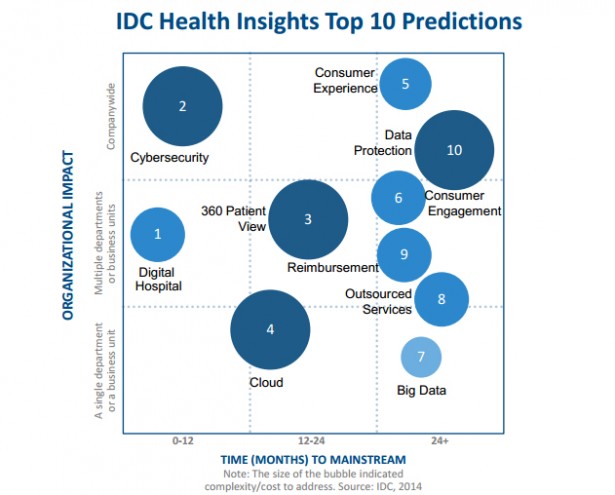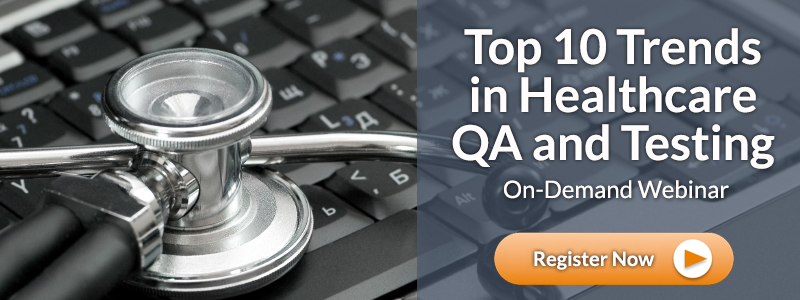10 Predictions for Healthcare IT in 2015
 The dizzying pace of change in healthcare IT shows no signs of slowdown, say industry analysts at IDC, a leading IT advisory firm.
The dizzying pace of change in healthcare IT shows no signs of slowdown, say industry analysts at IDC, a leading IT advisory firm.
The group is forecasting increased spending on technologies that improve data security and manage healthcare costs. Other trends that may drive healthcare IT investments include a “focus on consumer experience and engagement, the use of mobile and internet enabled devices, and of course, the 3rd Platform technologies," said Scott Lundstrom, Group Vice President and General Manager of IDC Health Insights.
Lundstrom and other IDC analysts recently unveiled their top 10 health industry predictions for 2015. Their list:
- With rising healthcare costs and new emphasis on clinical outcomes, operational inefficiency will become critical at 25% of hospitals; as a result, by 2016, these hospitals will be budgeting for a data-driven digital hospital strategy.
- By 2015, 50% of healthcare organizations will have experienced one to five cyberattacks in the last 12 months with one out of three attacks deemed successful, requiring healthcare organizations to invest in a multi-prong security strategy to avoid disruptions to normal operations and incurring fines and notification costs.
- Driven by the increased pressure to improve quality and manage costs, 15% of hospitals will create a comprehensive patient profile by 2016 that will allow them to deliver personalized treatment plans.
- By 2018, 80% of healthcare data will pass through the cloud at some point in its lifetime, as providers seek to leverage cloud-based technologies and infrastructure for data collection, aggregation, analytics and decision-making.
- As a result of an increased focus on improving the consumer experience, 65% of consumer transactions with healthcare organizations will be mobile by 2018, thus requiring healthcare organizations to develop omni-channel strategies to provide a consistent experience across the Web, mobile and telephonic channels.
- To control spiraling healthcare costs, 70% of healthcare organizations worldwide will invest in consumer-facing mobile applications, wearables, remote health monitoring, and virtual care by 2018, which will create more demand for big data and analytics capability to support population health management initiatives.
- Building on continuing technology innovation and the increasing use of knowledge-based workflows and actionable analytics, more than 50% of big data issues will be reduced to routine operational IT by 2018, reducing the need for specialized IT resources to support big data.
- With increased dependence on external partners for outsourced services, more than 50% of health and life science buyers will demand substantial risk sharing by 2018 to ensure that service providers recognize their growing role in the process and delivering added revenues to high performers at the expense of satisfactory or lesser performers.
- As a result of increased pressures to deliver better outcomes of care more efficiently, payers implement newer reimbursement models for 35% of their payments to providers in NA and EU within the next 36 months, resulting in related investments in quality measurement, payment and billing systems.
- By 2018, 42% of the world’s healthcare data will be unprotected but will need to be protected, as use of data and analytics continues to proliferate, and more stakeholders are involved in delivery of care.
Lundstrom said the transformations predicted for the industry require not only technology investments, but also strategy, people and processes. IDC advised cultivating “tomorrow’s IT talent today” by building a pipeline of people and skills required to implement newer technologies and IT strategies.

